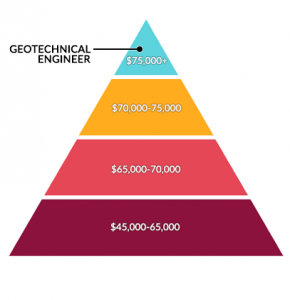Geotheta for Beginners
Geotheta for Beginners
Blog Article
8 Easy Facts About Geotheta Shown
Table of ContentsThe Main Principles Of Geotheta Everything about GeothetaGeotheta Things To Know Before You Get ThisThe Main Principles Of Geotheta
They work together with civil engineers, architectural engineers, designers, and various other professionals to integrate geotechnical factors to consider into the overall job design and building process. This requires effective teamwork, sychronisation, and interaction to ensure that the geotechnical elements align with the project goals and meet regulatory requirements.Mining & Products Design: Concepts of drilling, infiltration rates, and factors affecting the option of exploration approach. Blowing up strategies in surface and underground functions. Mechanical and continuous strategies to fragmentation, including longwall shearing and fullface boring.
Modelling of piece and bit dimension distributions; comminution as a transfer feature. Comminution innovation: squashing, grinding, dimension classification. Integrated evaluation of fragmentation and comminution procedures. Supplied by: Mining & Products Engineering.
More About Geotheta
Bachelor's level programs in civil, geotechnical, geological, and ecological engineering normally last four years and consist of general education training courses in English, social scientific research, and the liberal arts, as well as programs in advanced mathematics, structural geology, and fluid mineralogy. (https://www.openstreetmap.org/user/geotheta)
Geotechnical design includes the assessment of the dirt and rock problems at a certain site, and their effects for the advancement of that site. As many frameworks rely on the ground for support, it lacks shock that a comprehensive understanding of the ground problems, and the viability of structure systems, are vital to the long-lasting stability and performance of the building or framework.
Being experts in the examination of geological developments and ground behaviour, geotechnical engineers carry out scientific examinations and screening to understand the influence these geological formations may carry the layout and construction of building, civil and infrastructure jobs. This competence is important for the style and building and construction of structures, roadways, passages, dams, bridges, and water system and sewer system.
The geotechnical group at Douglas Partners routinely talk to designers, layout engineers, programmers, and building contractors to make suggestions on design and growth propositions to make certain that the constructed structures are accordingly created for the ground problems. The layout of footing systems requires to take into consideration the weight of the structure, the capability of the ground to support that weight with each other with activity tolerances and effective construction.
The Ultimate Guide To Geotheta
This task is greatly simplified by the use our Douglas Map geospatial system that makes this details readily obtainable in a simple to use internet internet browser interface. A geotechnical engineer will guide the drilling of boreholes and test pits to gather dirt and other samples, and additionally evaluate surface area functions and ground direct exposures to create a geotechnical version of the subsurface conditions.
Depending on the job type and ground problems ran into, laboratory testing may among other points assess stamina, compressibility, reactivity and/or permeability of soil and rock examples. Hereafter data is gathered and looked at, the results are made use of for a geotechnical model of the website, which is usually offered as useful source sections across the website.

A geotechnical investigation by nature can just analyze the ground problems at the locations pierced or dug deep into. Natural variations in dirt and rock conditions can happen across a site and between examination areas. It is consequently good method that the geotechnical designer be preserved throughout building and construction of the task to provide on-site confirmation that the ground problems run into follow the assumptions and recommendations offered in the geotechnical investigation record.
Indicators on Geotheta You Need To Know
Geotechnical engineers use their extensive knowledge of dirt and rock to examine threat and solve issues on varied infrastructure projectsGeotechnical engineering is a specialist branch of civil design which takes a look at the practices of earth products and the application of soil and rock mechanics. Tailings Engineer. As a geotechnical designer, you will certainly analyze the physical, mechanical and chemical properties of dirt and rock in order to create foundations, keeping structures and earthworks
Geotechnical design is very closely linked to and overlaps with, both engineering geology and ground design - https://sketchfab.com/geotheta. It's feasible to be experts in geotechnics or work for a geotechnical business yet be called a design geologist or a ground designer. As a geotechnical engineer, you'll require to: construct and maintain partnerships with customers and other experts associated with the site, throughout each projectmaintain safety and security requirements on site bear in mind expense implications when you make recommendationsstudy geological maps and airborne photographs from a variety of sources and from different time periodsexamine building and construction prepares to see how viable they are based on your understanding of the siteinvestigate threats or geological dangers for the sitesearch for environmentally delicate functions, such as land fill begin to create accurate and expository ground modelsplan field investigationsdrill and evaluate samples of bedrock, soil, groundwater and added materials oversee other experts on sitesolve technological problems as they emerge, such as unexpected frameworks at drill sitesmonitor conditions during and after building and construction to ensure structures are stable in the short and long termadding information accumulated on website to your preliminary researchcreating geotechnical estimations, illustrations, and two or three-dimensional computer models analyzing the datamaking suggestions regarding the suggested use of the website

Report this page